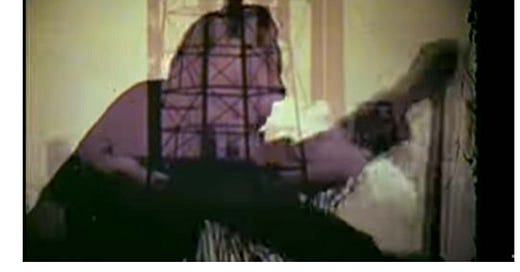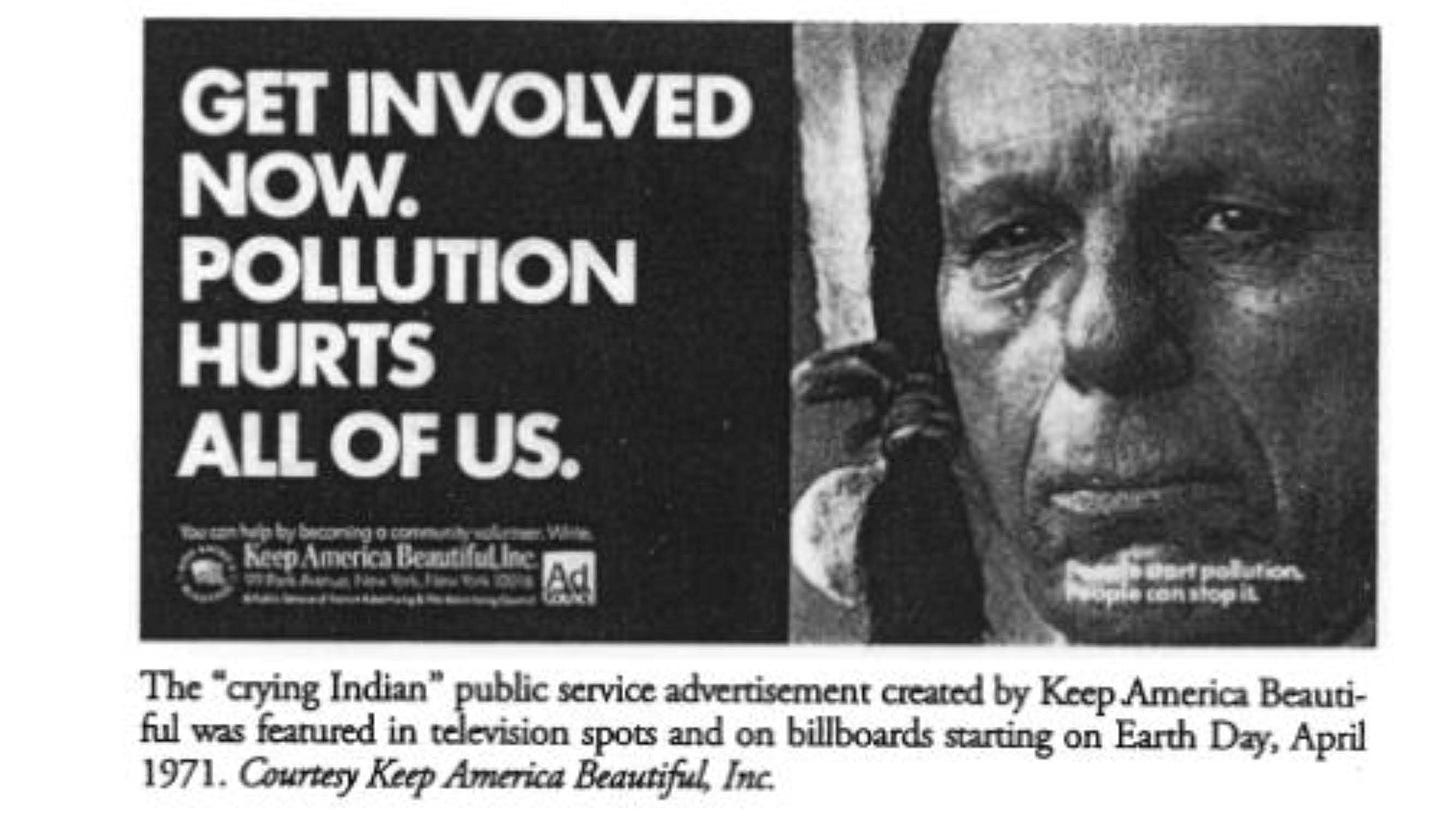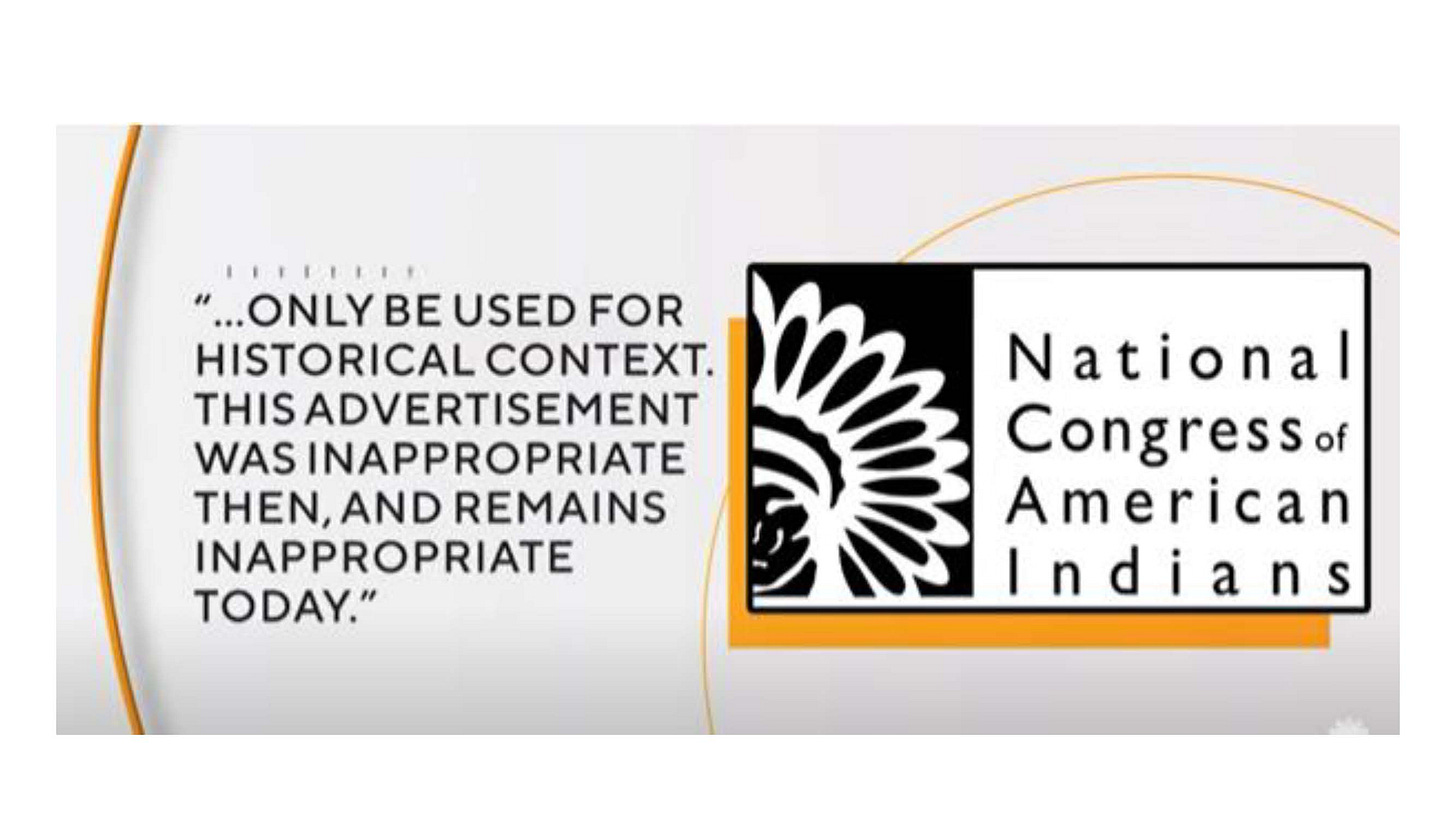Earth Day 1971
Native America retires one of the most successful ads of all time and it’s complex
The first Earth Day, April 22, 1970 was the ground swell and culmination of an environmental movement that resulted in major shifts in federalism of environmental law, from state control to federal control of pollution. Pollution of the water and air had obvious interstate effects, the key test for whether Congress has the authority to regulate it, and rivers bursting into flames finally made national news.1 States had been actively engaged in the “race to the bottom” with their low standards, if any, in order to attract industry more than willing to take advantage of little or no environmental regulation.
By the second Earth Day, in 1971, the U.S. Environmental Protection Agency had been created several months earlier by Pres. Nixon with his Reorganization Plan in July 19702 and a new awareness took hold of the nation of our beginning to reverse the trend of poisoning our own nest. Obvious problems like roadside trash was something that everyone could take part in stopping. The Keep America Beautiful campaign was born, and out of that arose one of the most iconic commercials of all time:
Now 52 years later, the Keep American Beautiful organization, February 2023, has transfered the rights to the commercial to the National Congress of American Indians for retirement.3
Why retirement?
The ad was highly effective. Many people claim they were so touched by it they never littered again. Everyone who lived in 1971 and watched television probably remembers it even 50 years later. Just one youtube posting that is two years old has 800 comments and most of the comments are how they love the commercial. It is still rated as one of the best television advertisements in history.4
Why is it so disliked by the Native American community?
1. De-humanizing aspect of the Native American in the ad
The time and the ad are very complex. The dark past of the genocidal treatment of Native Americans is played out when the garbage is thrown at his feet, making the Native American synonymous with the environment and the public’s attitude of not caring about it was a subliminal message.
2. The actor built his career falsely claiming to be Native American
Iron Eyes Cody, was the son of immigrant parents from Sicily. However, he claimed to be Cherokee through his father. 5 He built his career on this false identity and after this PSA he was hired for three more, and almost a dozen movies, including serving as an advisor on movie sets.6
Taking on the identity of Native Americans and profiting from it, is something we saw with Sen. Elizabeth Warren, who using this false identity, allowed Harvard Law School to claim her as a person of color on their faculty.7 Despite her failure to do anything for the Native American community during her entire academic career, she has begun to introduce and support legislation that supports Native American interests.
Some would say at least she is now making a contribution to the Native community. Some might say that at least Iron Eyes Cody inspired people to stop throwing out trash and littering. Both profited their entire career with a false identity. Is that a matter of seeing the glass half full, or is it missing a greater harm that both caused?
3. Fantasy Indian
The commercial used sterotypes throughout to depict the fantasy of the Native American still canoing and wearing 18th century regalia. Using stereotypes and tropes for any racial group is not appropriate. Seeing Native Americans as relics of the past has had lasting damage on Native American children that makes it difficult for them to live in the two worlds into which they have been born.
4. Trivializing the Relationship with the Environment
The relationship of Native Americans to the environment is culturally a part of every Native Nation’s tradition and way of life. Yet a commercial by its very nature of 30-60 seconds minimizes the way that this is taught and experienced. In this ad, non-Indians are interpreting the relationship of Native Americans to the environment and can be seen as trivializing the centuries long battle with the U.S. government to protect that relationship.
If looking back, we could observe that this narrative drove the U.S. to return stolen land, protect Native lands from pollution for which the U.S. serves as trustee and to provide the special protections necessary to protect sacred sites, then we could say the right message was taken from the ad. Not that stopping littering isn’t important (It is.), but it minimized what should have been a deeper call to action in the ad.
5. The public’s dupicity in holding two contradictory opinions about Native Americans
While this ad depicted the fantasy Indian that everyone wanted to embrace as the ideal, the real Native American community was still suffering from discrimination and hatred in many parts of the U.S. including South Dakota and parts of Arizona. The failure of the U.S. to live up to its agreement to provide an infrastructure on reservations with the basics of water and electricity were neglected and still are the most deprived areas in the U.S. for these basics.
At the time of this ad, Native Americans were occupying Alcatraz and demanding the government keep its promises to Native Nations. A major tragedy of Wounded Knee where Natives were massacred (again in the same place as in 1890) was taking place within two years of the ad’s introduction, while it was still ironically being shown at the height of its popularity.
Admiration and hostility were two realities of American attitudes toward Native Americans,8 and the ad perpetuated a coverup of this duplicity.
6. National Congress of American Indians statement
The NCAI accepted the rights to the ad and commented that it would use it for historical purposes only. “This advertisement was inappropriate then, and remains inappropriate today.”
The complexity of this ad is summed up in “inappropriate” but because it was such a widely loved and remembered ad, much like sports mascots that use Native American stereotypes, it makes it particularly difficult to accept the explanation that all this is actually de-humanizing Native Americans with the use of the narrative and character. But much like mascots there are plenty of Native Americans who like the ad — it is complex.
Bigger problems
Another argument is that there are bigger problems facing Indian Country and this is undoubtedly true but sometimes the chronic, long term damaging tropes can stagger efforts to fix the big problems.
Fifty years later, the ad has been retired, it is not gone and will be used as historical context. Having a deeper understanding of the complexity of this advertisement can help us move forward.
https://www.smithsonianmag.com/history/cuyahoga-river-caught-fire-least-dozen-times-no-one-cared-until-1969-180972444/
President Nixon called for the establishment of an Environmental Protection Agency as an independent agency pursuant to Reorganization Plan No. 3 of 1970 (5 U.S.C. app.), effective December 2, 1970. It was created to permit coordinated and effective governmental action on behalf of the environment. The Agency is designed to serve as the public's advocate for a livable environment at https://www.federalregister.gov/agencies/environmental-protection-agency
https://apnews.com/article/indigenous-people-climate-and-environment-entertainment-97c6b0affacbe64370ad3e1bf7f1c70c
https://www.chicagotribune.com/opinion/commentary/ct-perspec-indian-crying-environment-ads-pollution-1123-20171113-story.html
https://apnews.com/article/9581117ee9e621d4232b5a32aad8eb97
https://apnews.com/article/indigenous-people-climate-and-environment-entertainment-97c6b0affacbe64370ad3e1bf7f1c70c
https://theintercept.com/2018/10/16/elizabeth-warren-dna-video-native-american-harvard/
See generally, Deloria, Philip J. Playing Indian. New Haven: Yale UP, 1998. Print.






